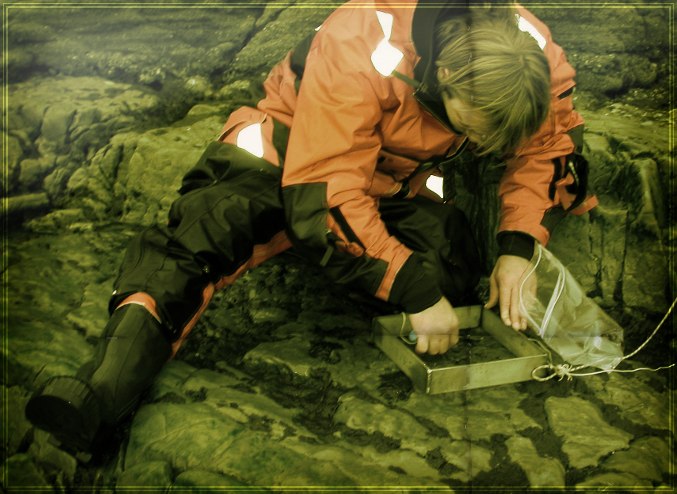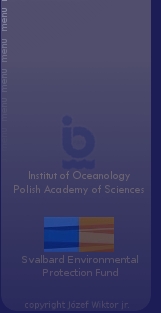Sampling has been performed from one hour before to one hour after the lowest tide (regular, M2 semidiurnal moon tides, of 1.6 m average amplitude).
At each sampling station submerged rocks were selected (skjerra) with visible vegetation cover. Name of the station, geographic position (GPS), date and hour were noted. Notes on litter, wildlife, and algae deposits were taken. Temperature and salinity of the tidal pools were measured with the electronic field reader.
Next, series of photos were taken - general view of the shore, and 5 to 10 close-up photos of individual coast fragements. Each close up was taken from the 50 cm distance, and presents approximatively 60 x 60 cm, for the assessment of the scale 20 cm long leatherman tool was placed on the rock.
- Macroorganisms - hard substrate - three vegetated rock fragments of 25 x 25 cm were scraped down to the bare stone, all squares situated within 1m from each other. All the organisms, algae, soft sediment removed was placed to the large 1 dm3 bottle unsorted and fixed with 5% formalyne solution.
- Macroorgansisms - soft substrate - six sediment squares were cut (25 x 25cm and 5 x cm depth), placed unsorted into 1 dm3 plastic jars and fixed with 4% formalyne solution.
- Macroorganisms - free moving - from the neighbouring area - tidal pools, holes among rocks etc., all conspicuous organisms were collected with the hand pushing net of 0.5 mm mesh size. Additionally 30-40 gammarid amphipods were collected from below the flat, loose rocks in the study site.

Later, in the laboratory, organism were extracted from samples taken on soft substrate by decantation method. Part of material was placed in 1000 cm3 cylinder and filled with tap water. Solid material was suspended in water by rotating cylinder 3 to 5 times (depending on size of particules). Mineral material being more dense sediments faster leaving organic matter alone suspended in water which was filtred on 0,5 mm mesh. This operation was repeated 5 times. Material remaining in cilinder after this operation was belived to contain only mineral matter.
All procedure was repeated until whole sample was treated this way.
Preatreatment of samples taken on hard substrate consisted in manual separation of animals, algaes from mineral particules. Later organic material was preserved in 4% formaldehyde solution in seawater.












